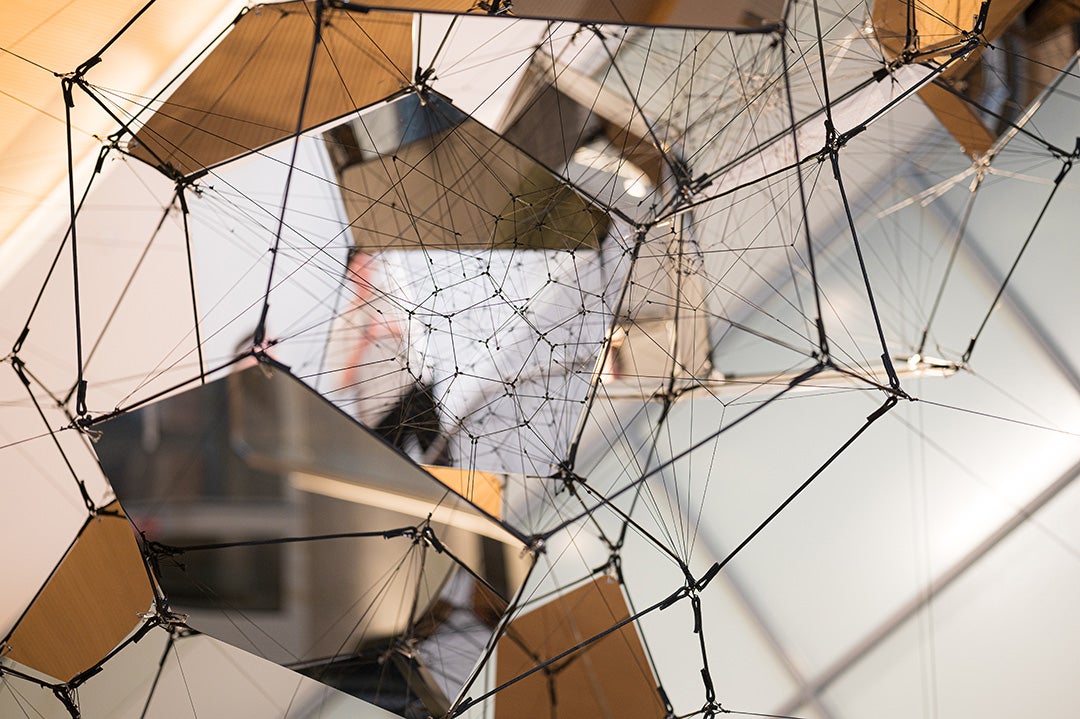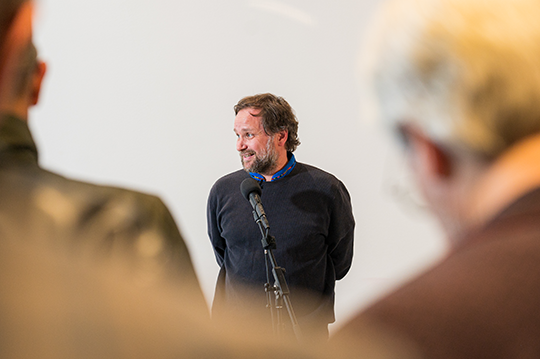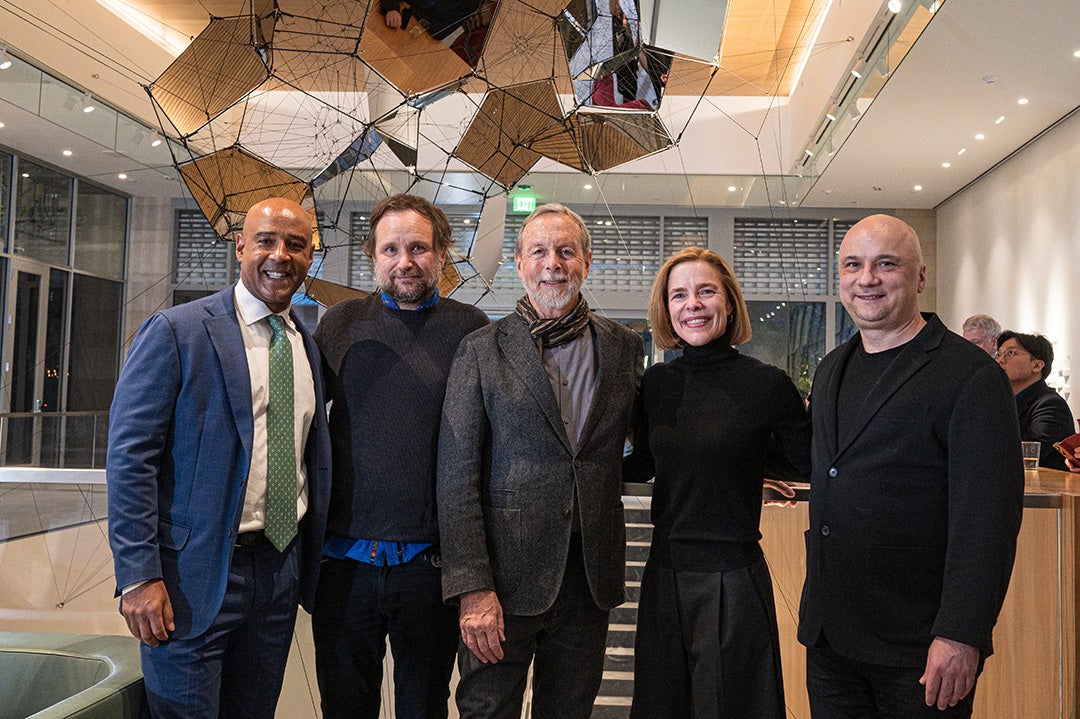Welcoming visitors to the dedication ceremony hosted by the Moody Center for the Arts, Rice University President Reginald DesRoches expressed appreciation for the university’s newest public art installation, “Crux Australis 68.00,” a structure that spans multiple stories within the Ralph S. O’Connor Building for Engineering Science.
“As an engineer myself, I’m particularly excited about this piece and the opportunity to place a work inspired by natural science in a place where scholars, scientists and engineers are engaged in some of the world’s most important work, including problems around energy, climate and sustainability,” DesRoches said.
Commissioned by the Moody Center for the Rice Public Art collection, “Crux Australis 68.00” was created by the internationally renowned Argentine artist Tomás Saraceno. The polyhedral sculpture is named after the constellation with the highest concentration of bright stars, comprising 10 shapes arranged in three clusters of interconnected polyhedrons, drawing inspiration from the Weaire-Phelan structure. It reflects Saraceno’s extensive research into molecular, environmental and metaphorical aspects of natural shapes such as bubbles, clouds, spiderwebs and honeycombs.

“Tomás works with architecture, with bioscience, with the natural world, with engineering in ways that invite us to reconsider our world and our relationship to both the natural forms and the man-made research that’s happening in this building,” said Alison Weaver, the Suzanne Deal Booth Executive Director of the Moody Center.
During the Dec. 13 dedication ceremony, DesRoches emphasized the importance of incorporating public art into the university environment.
“(It) enriches the experience of every student, faculty, staff, alumni and visitor to our campus — in particular for this building, which is quickly becoming the most popular building on campus,” DesRoches said.

DesRoches called “Crux Australis 68.00” a symbol of the university’s commitment to interdisciplinary collaboration, a theme echoed by the structure’s interconnected polyhedrons. “Crux Australis 68.00,” suspended in midair and covered in mirrored surfaces, not only captures the essence of the surrounding environment but also symbolizes the bright future and collaborative spirit central to Rice’s educational philosophy.
Saraceno, present at the dedication ceremony, expressed his excitement and the challenges he faced in bringing the installation to life. Having observed the piece for more than a year and a half in virtual reality, he marveled at how the reflections and composition exceeded his expectations.
“When you look at the work, you never see what you are seeing somehow because of the position of all of these reflections,” Saraceno said. “It composed something that seems quite impossible.”
He added that he hopes his work will connect people, disciplines and the university to the world, the planet and even other solar systems and galaxies.

This installation marks the first permanent, public display of Saraceno's work in Houston and serves as a testament to Rice’s commitment to fostering interdisciplinary conversations. The unveiling of “Crux Australis 68.00” stands as a transformative moment, bridging the realms of art and engineering and inviting all to contemplate the boundless possibilities at the intersection of science and creativity.

